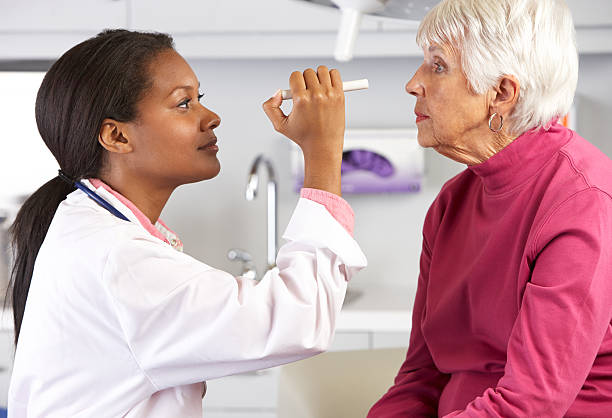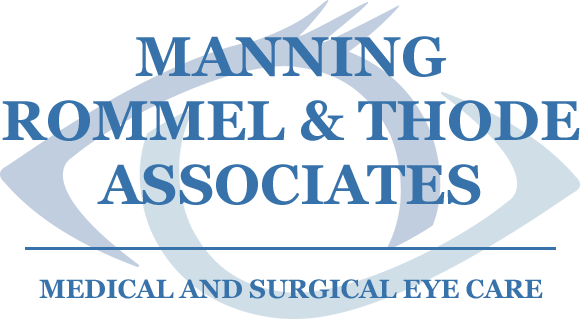As we age, it’s common for everyone to experience changes when it comes to their vision. For infants, their vision develops over time, but as we progress into adulthood, there might be noticeable differences that require us to seek assistance to treat these changes, such as prescriptions, surgery, and so on.

Keep reading to learn how age affects the eyes and what to look out for as you get older.
Vision Changes in Children
Infants
Infants don’t immediately have good vision when they’re born. Their vision takes time to develop and their brain actually needs to learn how to use their eyes to see things. Being able to detect objects, colors, faces, and so on is an ongoing process that occurs in small stages — similar to when they learn to walk and talk.
Infants begin to see in the following stages:
- 1-3 months: they can begin to focus
- 3 months: they start to be able to follow objects
- 5-8 months: they see color
- 8-12 months: their hand-eye coordination starts to improve
While their vision can continue to change up until they are ten years old, it’s crucial to monitor their vision during infancy (birth-24 months) and childhood years (mainly preschool years between ages 2-5).
Babies should get their first eye exam between 6-12 months of age and then again around 3 years old. If there are issues detected at the first exam, they might need exams more frequently. In order to properly monitor vision development, children should receive exams every two years after their initial visits.
Baby vision issues might include:
- Red/crusty eyelids
- Excessively watery eyes
- Light sensitivity
- Development of a white pupil
Preschoolers
As noted above, a child should receive their first eye exam by the age of 3 in order to detect any early eyesight issues. As their hand-eye-body coordination improves at this age, you may notice new habits in the way they act.
Here are potential signs of visual development issues:
- Holding objects too close to their face or sitting too close to objects
- Excessively rubbing or squinting their eyes
- Excessively tilting their head
- Avoiding activities with peers or having trouble coordinating
Middle School/Teenagers
At this age, we depend on our vision much more than we did throughout childhood, especially with the increase in screen time as well. Vision problems such as nearsightedness are often indicated during this phase and should be regularly monitored by an eye doctor moving forward.
Signs to look for that
indicate vision issues during these years are:
- Difficulty staying on task
- Avoiding reading
- Clumsiness
- Constantly uncomfortable or tired
Vision Changes in Adults
Ages 20-40
Between our 20s and 40s, laying the groundwork and habits for healthy eye vision is important. This can be done by eating nutritious foods, exercising, wearing sunglasses, maintaining check-ins with your primary care providers, and so on.
Ages 40-50
When we reach our 40s, we might start to notice changes in our vision. When we reach this stage, it’s essential to not only see your eye doctor annually, but also seek medical attention as soon as possible at the first sign of any vision changes.
Some of these include:
- Presbyopia: This is when the lens of your eye begins to harden, making it more difficult to focus. This usually results in needing reading glasses or specific glasses for driving.
- Dry eyes: This iswhen our eyes produce fewer tears due to factors such as sun and wind exposure, high blood pressure, stress and so on, resulting in burning or stinging eyes.
- Glaucoma: while symptoms don’t appear until late in the disease, getting your eyes checked every two to three years might help with early detection. If caught early on, the case can be controlled with eye drops alone rather than more invasive procedures such as surgery.
Ages 50-60 and on
While it is possible to notice these changes either earlier or later in life, the following are a few conditions diagnosed mainly in seniors:
- Floaters: These are tiny white or black specks that move around in your field of vision. While they’re not a serious issue, they can be bothersome. That being said, if accompanied by light flashes, schedule an appointment with your eye doctor ASAP.
- Cataracts: When the lens in the center of your eye becomes cloudy and interferes with your vision, this is a sign of cataracts. This mainly results in surgery to remove it and replace it with an artificial lens.
- Age-Related Macular Degeneration (AMD): AMD is the leading cause of blindness among seniors, which occurs when changes to your macula (the part of your retina that controls your vision) cause your central vision to be blurry or appear blank. AMD makes it hard to read, drive, recognize faces, and so on.
No matter what phase in life, our vision is constantly changing as we age. It’s important to schedule regular visits with your ophthalmologist to ensure proper care.
If you’re looking for an eye doctor, there is no need to research “best eye care” or “vision exam near me.” Located in Lancaster, PA, Manning, Rommel & Thode Associates understand the importance of clear vision. Contact us today to make an appointment!
